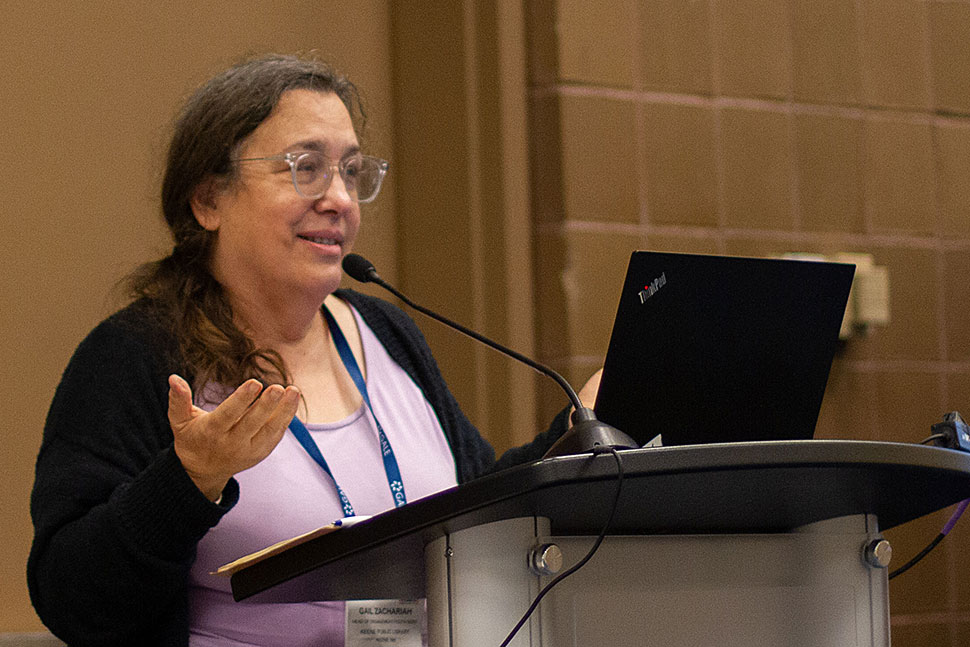
A makerspace at the library geared for 2–6 year olds may be a bit difficult to imagine, but all it takes to start is a few things: small ramps, flashlights, a repurposed overhead projector, and in many cases, an assortment of toy balls will do. And at home, it can look like a variety of disposable cups, flour, and food coloring.
“Sometimes, parents will ask us, ‘What can we do with a cup?’” said Amy Kraemer, youth services librarian at Keene (N.H.) Public Library (KPL). “Maybe your kid thinks it’s a cup, maybe they don’t. You can fill it up with beans and shake it, make a parachute out of it. Let your kid think about it.”
Kraemer, joined by Gail Zachariah, head of engagement and youth services at KPL, talked about their Little Makers program, its benefits, and how it shifted during the pandemic at “Starting Young: How to Launch Family Making Experiences at the Library,” a January 29 session at the American Library Association’s 2023 LibLearn X conference in New Orleans.
KPL’s Little Makers program, which began in 2018, aims to encourage children to tinker with and tailor objects through the process of play, involve parents and caregivers to encourage co-learning between them and their children, and demystify STEM (Science, Technology, Engineering, and Math) concepts.
With a focus on open-ended play, Kraemer said that a challenge was getting parents to let go of leading their children and instead encourage them to let their kids experiment. The activities didn’t have a set outcome. “We’re adults. We already know that if you slide a ball off a table, it’s going to fall. But the kids don’t,” she said. “So a big part of our job was to help the parents hold back but assist, and be the helpers or the co-learners with their children.”
At times, parents can also be confused or intimidated by the term “STEM.” Kraemer and Zachariah said they emphasized how STEM can be as simple as playing with light and rolling different-shaped objects down a ramp. “You don’t have to be an expert,” Kraemer said.
The program has worked in person but also shifted online due to the pandemic. “We really tried to avoid the idea of calling it ‘virtual,’ because it really wasn’t virtual. We called it ‘at-home,’” Zachariah said. KPL produced take-home kits and encouraged families to participate and record their activities on Goosechase, an app that can replicate a real-world interactive experience inspired by scavenger hunts.
“One of the best things about the at-home program was people really did understand how science is all around you,” Kraemer said. “Things that are engineered are part of your daily life, but you don’t really think about it. Part of our goal was to get [parents and caregivers] to think about that.”


